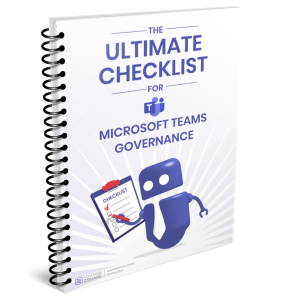Azure IAM: Identity and Access Management in Microsoft 365 explained
What is Azure IAM and why is it important?
Azure Identity and Access Management (IAM) is the central concept for controlling who has access and what permissions apply in Microsoft 365. Without clear guidelines, chaos can quickly ensue:
- Employees retain access rights even after changing departments.
- External guests remain active even though projects have long since been completed.
- Compliance evidence for audits is missing.
With Azure IAM, companies secure their data, reduce risks, and meet regulatory requirements.
In this blog article, you will find out exactly what Azure IAM is, what tools and functions Microsoft provides for it and why the management of external users is often neglected. I’ll also show you how External User Manager closes this gap – with advantages in terms of overview, automation and security.
Tip: Do you want to know straight away how you can ensure good Microsoft 365 guest management? Take a look at External User Manager.

What processes does Azure Identity and Access Management (IAM) cover?
Azure IAM describes all processes used to manage digital identities and control their access rights to resources in the Microsoft cloud.
In the past, Azure Active Directory (Azure AD) was primarily responsible for this. Today, this service is part of the Microsoft Entra platform under the name Microsoft Entra ID, which maps modern IAM functions across the board.
IAM addresses two key questions:
- Who are you? → Authentication
- What are you allowed to do? → Authorization
A typical IAM process works like this:
- A user logs into Microsoft 365 – for example with a user name, password and a second factor such as an SMS code or app confirmation.
- Microsoft verifies the identity using stored data and, if necessary, multi-factor authentication.
- Based on policies and roles, a decision is made as to which resources (Teams, SharePoint, files, etc.) are granted access.
- If necessary, further conditions such as device status or location (conditional access) are applied.
IAM therefore ensures that the right people have access to exactly the resources they need for their work at the right time.
What are the reasons for Azure IAM in Microsoft 365?
Without well-designed identity and rights management, IT security is virtually impossible. Azure IAM is therefore a central element in any Microsoft 365 environment – for small businesses as well as large organizations with distributed teams.
The most important reasons for Azure IAM:
- Security: Prevents unauthorized access to sensitive data.
- Compliance: Supports legal requirements such as GDPR, ISO 27001 or NIS2.
- Transparency: Clear roles and rights prevent uncontrolled growth in the assignment of rights.
- Automation: Less manual administration saves time and reduces errors.
Practical examples:
- When onboarding new employees, Azure IAM is used to determine which teams, files and apps are immediately available.
- When someone leaves the company, lifecycle management can be used to ensure that all access rights are automatically revoked.
- Rights for sensitive data or admin access are regularly checked and documented via access reviews or PIM.
Collaboration with external partners or service providers in particular shows how important structured IAM processes are – but also where the limits of standard functions lie. More on this in the blog article below.
What is the difference between Azure Identity Management and Access Management?
IAM consists of two areas:
- Identity Management: Management of user accounts, guest accounts, groups, and roles; assignment to departments, locations, or projects; maintenance of profile information and attributes
- Access Management: Regulation of which resources users have access to, including multi-factor authentication (MFA), conditional access, roles, and permissions.
Only when both areas are neatly interlinked can a secure, maintainable IAM system be created.
Example: A user is in the “Finance” department (Identity Management) and therefore has access to the budget SharePoint (Access Management), but only if they log in with MFA via a company end device.
What services does Azure IAM offer?
Microsoft provides various services to secure identities and access:
- Microsoft Entra ID (formerly Azure AD): The central identity provider for Microsoft 365
- Conditional Access: Control access based on location, device, risk level, etc.
- Multi-Factor Authentication (MFA): Additional protection against compromised accounts
- Privileged Identity Management (PIM): Temporary assignment of admin rights with approval processes
- Access Reviews: Regular review of authorizations by superiors or system administrators
- Lifecycle Management: Automatic creation, modification and deletion of user accounts
- Azure AD B2B: Invitation and management of external business partners
These services can be combined to create a comprehensive IAM concept with clearly defined roles, access and security levels.
Why do external users often remain uncontrolled in Azure IAM?
While Microsoft Entra ID offers extensive functions for internal users, external users often remain a blind spot in the system.
Although Azure AD B2B allows you to invite guests to Microsoft Teams, you quickly reach your limits when it comes to administration:
- No complete overview of all guest accounts
- Outdated or inactive guests remain unnoticed in the system
- Manual onboarding via individual invitations is prone to errors
- No expiration deadlines or automatic renewals
- No integrated overview within Microsoft Teams
The result: security risks, excessive permissions, and a lack of audit evidence.
You can find out more about the challenges related to Microsoft Teams guest access in our blog article.
How does External User Manager complement Azure IAM?
External User Manager (EUM) specifically complements Azure IAM functions with everything that is missing for the management of guest users.
External User Manager offers the following functions:
- Import of all existing guest users – even before the introduction of EUM
- Request forms and automated onboarding of guests
- Integration of approval processes
- Guest accounts with expiration date, renewal or automatic removal
- Central overview of all guests – directly in Microsoft Teams
External User Manager makes guest management in Microsoft 365 automated, transparent, and auditable.

| Area | Microsoft IAM | External User Manager |
|---|---|---|
| Internal user management | ✅ Yes | – |
| External user management | ⚠️ Limited | ✅ Completely |
| Automated onboarding | ⚠️ Partially | ✅ Yes |
| Guest import | ❌ Not possible | ✅ Yes |
| Expiration management | ⚠️ Manual | ✅ Automated |
| Integration in Teams | ❌ No | ✅ Yes |
Best practices for Azure IAM in combination with External User Manager
- Define access policies: Clearly regulate MFA, conditional access, and roles.
- Establish lifecycle processes: Automatic removal of inactive users.
- Centralize guest access: With External User Manager and workflows.
- Regular access reviews: Check permissions every 30-90 days.
- Ensure audit reporting: Documentation for internal and external audits.
Frequently asked questions about Azure IAM and External User Manager
Azure IAM stands for Identity and Access Management in the Microsoft cloud. It regulates who is allowed to log in and what authorizations they receive.
Azure IAM checks who you are (authentication) and what you are allowed to do (authorization) each time you log in. Based on user roles, groups, security policies and device status, a decision is made as to whether access to a particular resource is permitted or not.
Azure AD was renamed Entra ID by Microsoft. The functions are largely identical, but the new name is intended to better position the platform in the Entra portfolio.
Identity Management takes care of user accounts and groups. Access Management controls access to resources – based on roles, rules or devices.
Azure IAM includes Microsoft Entra ID (formerly Azure AD), Conditional Access, Multi-Factor Authentication (MFA), Privileged Identity Management (PIM), Access Reviews and Lifecycle Management. Together, these services form the basis for managing identities and access rights in Microsoft 365.
Azure IAM is well suited for internal users. For external guests, however, it lacks central functions such as an overview, automated workflows or integrated approval processes. Tools such as External User Manager fill these gaps and significantly improve control over guest access.
External User Manager complements Azure IAM specifically in the area of external user management. It provides an overview of all guests, automated onboarding, workflow rules and approval processes – directly integrated into Microsoft Teams.
Conclusion: Azure IAM and External User Manager in combination for complete governance in Microsoft 365
Azure IAM is the foundation for secure identity and rights management in Microsoft 365. With Entra ID, MFA, Conditional Access, PIM and other tools, Microsoft provides a powerful basis. But when it comes to external guests, companies quickly reach their limits.
With External User Manager, you can automate onboarding, lifecycle, and audits.
Book a demo now and see how you can optimally enhance Azure IAM with EUM:

Chief Commercial Officer and Governance Specialist at Solutions2Share
Florian Pflanz has more than 8 years of experience with Microsoft 365 and has supported over 250 workshops on Teams governance.
His focus lies on lifecycle management, provisioning, and compliance requirements in regulated industries.
He shares best practices with IT admins and decision-makers to reduce complexity and strengthen secure collaboration in Teams.





